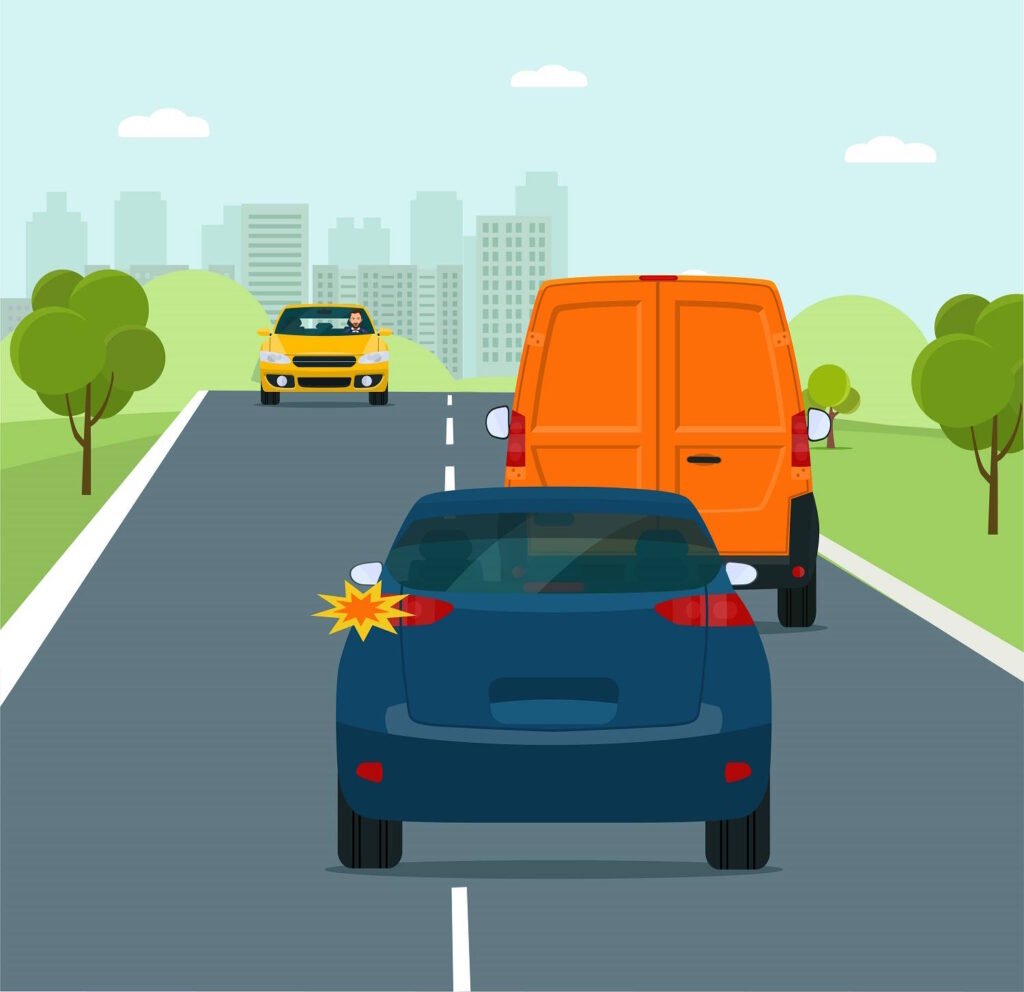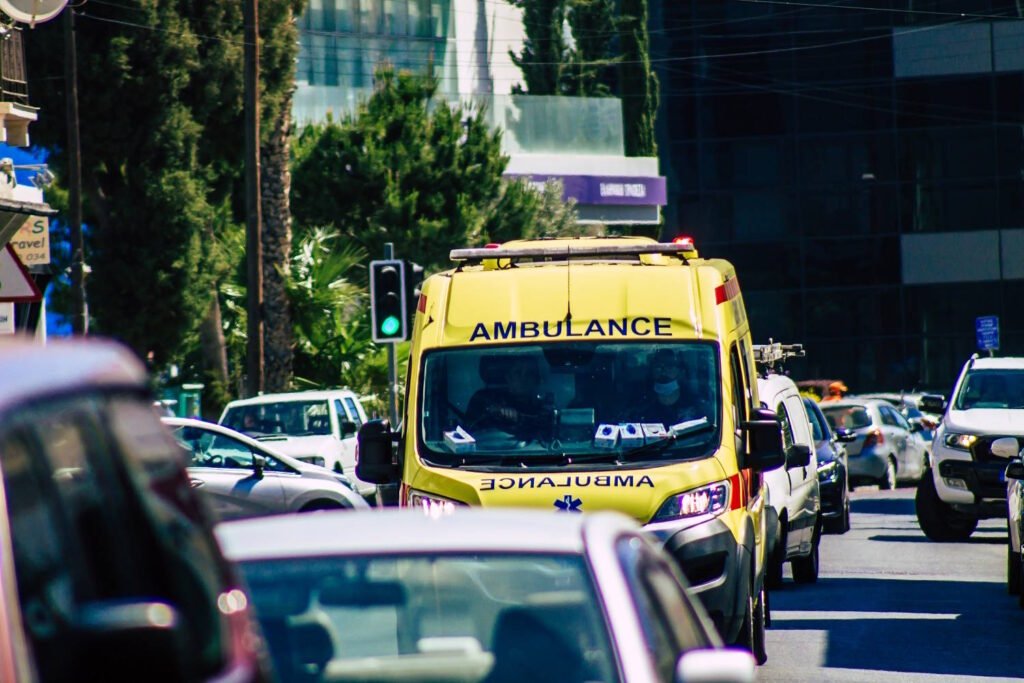When the piercing sound of a siren cuts through your favorite song on the radio or the flash of red and blue lights appears in your rearview mirror, knowing exactly what to do can make a critical difference in emergency response times. Emergency vehicles need to reach their destinations quickly, and as drivers, we have a legal and moral obligation to help them get there.
This article outlines the proper protocols for responding to emergency vehicles on American roadways.
Understanding the Right-of-Way Requirements
In all states across the US, drivers are required by law to yield the right-of-way to emergency vehicles that are using sirens, air horns, and/or flashing red or blue lights. According to the traffic laws outlined in the Department of State’s Office of Foreign Missions driving guidelines, you must pull over to the right edge of the road, or as near to the right as possible, when you see or hear an emergency vehicle approaching from any direction.
If you’re in an intersection when you first notice the emergency vehicle, it’s important to clear the intersection before pulling over. This helps prevent gridlock that could further delay the emergency response. However, if you’re on a highway separated by a median and the emergency vehicle is on the other side, you typically don’t need to stop.
Once you’ve yielded to an emergency vehicle, maintain a safe distance. State laws generally require you to stay at least 500 feet behind any emergency vehicle using lights and sirens on its way to an emergency.
Move Over Laws

Beyond the basic yielding requirements, all 50 states have now enacted “Move Over” laws. These laws require motorists to change lanes when approaching stationary emergency vehicles displaying flashing lights. This includes police cars, fire trucks, ambulances, tow trucks, and maintenance vehicles.
If changing lanes isn’t possible or safe, drivers must slow down significantly below the posted speed limit while passing the stopped emergency vehicle. In Iowa, for example, the Move Over or Slow Down Law has been expanded to include any stopped motor vehicle that is displaying hazard lights, not just emergency vehicles.
Violating these laws can result in serious penalties, including fines and potential license suspension. In Iowa, for instance, violating the Move Over law can result in license suspension for up to one year.
How to Properly Yield to Emergency Vehicles

When you first emergency vehicle siren or see flashing lights, stay calm and take the following steps:
- Check your surroundings and identify where the emergency vehicle is coming from.
- Signal your intentions to other drivers.
- Pull over to the right when it’s safe to do so.
- Come to a complete stop.
- Wait until the emergency vehicle has passed completely before re-entering traffic.
- Be aware that there may be multiple emergency vehicles in a sequence.
Remember that emergency vehicles sometimes travel in convoys. Just because one has passed doesn’t mean it’s safe to pull back into traffic. Always check carefully before proceeding.
Special Situations

Highways and Multi-lane Roads
On highways with two or more lanes going in the same direction, move to the right lane if possible. This allows emergency vehicles to pass on the left, which is typically the fastest route for them.
If you’re in heavy traffic on a multi-lane road and cannot move to the right because of other vehicles, slow down as much as possible and create space in front of your vehicle for the emergency vehicle to maneuver through.
One-way Streets
On one-way streets, pull to the nearest side of the road and stop. This may mean pulling to the left instead of the right, depending on your position and which side offers the clearest path for the emergency vehicle.
Intersections
If you’re at a red light when an emergency vehicle approaches, and you can’t safely pull over without entering the intersection, wait for the light to turn green before proceeding through the intersection, then pull over. Never block an intersection.
Common Mistakes to Avoid

One of the most dangerous mistakes drivers make when encountering emergency vehicles is panicking and stopping suddenly without checking mirrors or signaling. This can cause rear-end collisions or create additional hazards.
Another common mistake is “shadowing” or following closely behind an emergency vehicle to take advantage of the cleared path. This is not only illegal but extremely dangerous. Emergency responders need room to maneuver, and other motorists won’t be expecting a civilian vehicle to be closely trailing an emergency vehicle.
Some drivers also mistakenly think the right thing to do is speed up to get out of the way. Instead, orderly movement to the right and stopping is almost always the safest course of action.
The Importance of Compliance
Your response to emergency vehicles isn’t just about following the law, it can be a matter of life and death. According to the U.S. Department of Transportation, emergency response times directly impact survival rates for many medical emergencies. For instance, in cases of cardiac arrest, survival rates decrease by 7-10% for every minute that passes without defibrillation.
Every second counts when emergency responders are trying to reach someone in need of urgent medical attention, respond to a fire, or address a public safety threat. By promptly and properly yielding to emergency vehicles, you become an important part of the emergency response system.
Educating New Drivers
For parents teaching teenagers to drive, it’s important to explicitly cover emergency vehicle protocols. Have conversations about what to do in various scenarios and point out good examples when you see other drivers properly yielding to emergency vehicles.
During practice drives, you might discuss what to do if you hear sirens but can’t immediately see where they’re coming from, or what to do in heavy traffic when there isn’t an obvious place to pull over.
Conclusion
Understanding and following proper protocols for emergency vehicles is a fundamental responsibility for all drivers. By staying alert, responding quickly and appropriately, and teaching these skills to new drivers, we can all contribute to a system that helps emergency responders do their critical work efficiently and safely.
Remember: when you hear sirens or see vehicle emergency light bars flashing, move right, stop, and wait. Those simple actions could help save someone’s life.
FAQ’s
Question: Can emergency vehicles change traffic lights?
Answer: Yes, emergency vehicles like ambulances and fire trucks can, in many places, change traffic lights from red to green. This is often achieved through a system that uses coded infrared strobes on the emergency vehicle to communicate with sensors at the traffic light, which then changes the light to green.
Question: Can you film emergency vehicles
Answer: Yes, in the United States, you have the legal right to film emergency vehicles and personnel in public spaces, as protected by the First Amendment. This right has been affirmed by court cases such as Glik v. Cunniffe and Turner v. Driver, which recognize the public’s right to record public officials performing their duties in public.
However, there are important considerations to keep in mind:
-
Maintain a Safe Distance: Some states have enacted laws requiring individuals to keep a certain distance from emergency personnel. For example, Florida law mandates a 25-foot buffer zone around emergency responders after a verbal warning.
-
Do Not Interfere: While filming, ensure that you do not obstruct or interfere with emergency operations. Interference can lead to legal consequences.
-
Respect Privacy: Avoid capturing identifiable images of individuals receiving emergency care without their consent, as this may raise privacy concerns and potential legal issues.
Always prioritize safety and respect when documenting emergencies.


